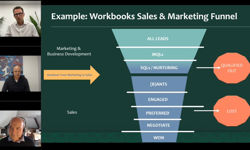When Mark Elliott joined Time Out London as publisher in January 2008 - some forty years after the magazine was launched by its founder, Tony Elliott (no relation) - he found a business confident in itself and relatively unchallenged in its marketplace. Subscriptions were strong, and though "an ongoing challenge", newsstand sales were no worse than they'd been for some years.
The business comprised a number of divisions: magazine and guides (which accounted for 81% of total revenue); international - comprising 35 international editions, 33 of which are published under licence and the remaining two as a joint venture (3%), digital - including the Time Out website and iPhone app (10%); and brand / creative solutions (6%).
The magazine, then, was the business's engine. Though others titles – paid-for and free - had entered the London listings marketplace inevitably impacting on Time Out's newsstand sales, none catered solely for Time Out's specific AB1 metropolitan demographic with the same depth of coverage. Despite this, there was a need for change.
"One of the obvious attractions of working at Time Out is its independence - its lack of corporate infrastructure, and all the opportunities and also the challenges this brings," Elliott, a publishing veteran who'd overseen a variety of titles at Brooklands Group and Emap, where as publisher of Empire he won PPA Publisher of the Year, explains.
"But the world was changing. The market was far more demanding. There was a need to fuse more closely all the different platform objectives within the business, and to achieve this in a difficult economic environment, there was a need to operate in a more formal way."
Reassessing priorities
The management's focus in the months before his arrival had been on driving the magazine's subscription base and building its presence online. While newsstand sales had fallen from 100,000 in the mid-90s to 20,000 by early 2008, subscriptions had grown steadily to 35,000. Presented with a £1m direct marketing budget to support a strong acquisitions drive, Elliott quickly identified a flaw in this strategy, however. Too little attention was being paid to customer retention and analysing where subscribers came from, what they wanted and how long they stayed.
Time Out's online growth, meanwhile, had been impressive. The digital side of the business revolved around the Time Out website which was attracting an impressive 2m unique visitors a week. An integrated content team in operation for a while was keeping up with its punishing weekly production and publication process. And responsibility for digital ad sales which had been outsourced was in the process of being taken back in-house.
Yet here, too, Elliott saw potential to reassess priorities.
"Digital had been an understandable focus. It was an incredible opportunity given the huge volume of information, transactional opportunity and affiliate potential involved - too big a job to be run as a sideline project. But the London ad market had shifted with the battle of the free sheets and we were all heading towards a recession," he explains. "An immediate challenge was to address the cost base. To make Time Out as an organisation more outward-facing. And to re-energise both the printed title and the team."
Restructuring the business
An early decision was to re-structure different parts of the organisation.
"There was a clear need to understand where we could be flexible and where we could consolidate - to choose more carefully how to invest both in terms of money and people's energy and time. We lost ten to fifteen jobs from around sixty on the print side of the business, but we became a learner and a far more flexible organisation as a result," he says.
It wasn't just about cost-saving but more effectively managing the print and digital content streams, Elliott insists: "The challenge any business has is an innate natural bias that comes from its origins. With a forty two year-old magazine - especially one with a staff which had been in place quite some time - there was an inevitable print bias because that was the industry many of the people who worked there had chosen to come into."
A flexible pool of eight generalist staff writers was established to work across all of the magazine's twelve sections. "It was a granular approach to managing journalists' time because in a tougher trading environment you have to make choices," he continues.
"With lots of complex changes and limited resources, you have to attach a degree of process to creativity - a layer of analysis and, not bureaucracy so much as structure in terms of meetings to allow debate in order to explore options. In this way, platform leaders can understand why project X might be more important and so a better use of resources than project Y. You've got to balance creativity and innovation with process."
A more cross-platform approach to ad sales was introduced, too, making Time Out an easier-to-use proposition for media buyers by expanding opportunities for marketing packages across digital and print. At the same time, Elliott set about bringing marketing closer to the business's heart.
Emphasis on marketing
"The danger is when marketing is just a pot of money set to one side. Because it's about far more than promotion. The best marketers understand and pre-judge the market and align internal teams more closely with their end user," he explains. "This is what we had to do, along with develop a more granular approach to reader research - something I brought with me from Emap where marketing is recognised as a central pillar of the business."
Marketing priorities also shifted.
Direct marketing expenditure was scaled back and a fresh emphasis placed on customer profiling to understand not only who Time Out's readers were but at what point they became profitable. As a result, subscriptions fell below 30,000 but, Elliott insists: "That was the right number because we understood who they were, and because they are all now broadly profitable. Subscriptions will now grow in a controlled way moving forward."
Events
Meanwhile, a new events operation was set up capitalising on consumer trust in the Time Out brand and the customer insight it had accumulated by publishing the digital edition. "Time Out had long been a gateway to events," Elliott explains. "Getting closer to those events - becoming organiser rather than just media partner - was a logical next step given the expertise we already had in-house."
Moving forward, he sees further opportunities for additional revenue coming from the development of a more comprehensive approach to readers' offers, a bit like the Times / Sunday Times' Culture+ offering: "Our strength lies in the tight geographical area we serve - the fact that most of the events we cover are within just a few miles of our readers' front door. Time Out's potential is to become more of a community hub, and not just online - a gateway in the sense of being more explicitly a provider not just of content, but services."
Mark Frith
Following the departure of editor Gordon Thomson in early 2009 and the arrival of his replacement, former Heat magazine editor Mark Frith, work refocused on how best to evolve the magazine - again, driven by a clear focus on the end user - and, ultimately, revitalise newsstand sales.
Since Frith took over as editor in July 2009, Time Out London has taken a more aggressively commercial approach. A series of high profile exclusives combined with what Elliott describes as "innovation around concepts with a proven track record" helped newsstand sales rise by 3.3% period on period to 17,312 - the first period on period increase of more than 1% since 1993 (Source: ABC July-Dec 2009). Subscriptions, meanwhile, rose 12.8% to 34,208 over the same six months.
"Utility covers - 'Hidden' this, or 'Budget' that - always prove popular," he explains. Set against this, recent innovations have been focused around things the team knew would work such as a cover exclusively designed by graffiti artist Banksy and subsequently sold as a poster via the Time Out shop, and a series of collectible Dr Who-themed covers.
"Time Out's strength is in its culture of creativity, but you've got to take a balanced view. It can be tempting within a company not solely driven by profit to be innovative because you can be, but in challenging economic times you have to focus more on bankable winners," Elliott adds. "You've got to remember you don't have to have someone obscure on the cover to be authentically Time Out. It's Time Out's take on things that makes the approach it would take to, say, Take That markedly different to the take you'd find in Heat."
Inside the magazine, further editorial evolution is now being driven by insights from Time Out's website.
"By analysing the online Time Out user's typical journey - from the purpose of the visit through the need to access information quickly and efficiently to selecting and booking tickets, then feeding back and telling other people if it was great - we could see the importance of early prompts, clear navigation and community participation. That's how digital works," he says. "The inevitable next question was: how to make this work in the magazine?"
Print readers are as much a community as Time Out's audience online, yet this was not something the magazine had previously acknowledged. Which is why stronger community features as well a fresh approach to listings presentation will play a central role in a new-look Time Out London due to hit the streets in mid-September. Time Out may now be an established brand and a multi-platform business in its own right but ambitions remain high for the magazine that began it all.
"The editorial template is still the one Tony Elliott built in the late 60s and is as robust now as it was then," says Elliott. "But it's achieved this through continual evolution. And the aim still for it moving forward is to be the best of its kind." Don't mistake Time Out London's new look for a relaunch - or, for that matter, some kind of mid-life crisis, then. Think of it, rather, as the forty something listings title coming of age.










